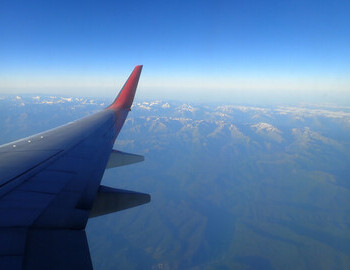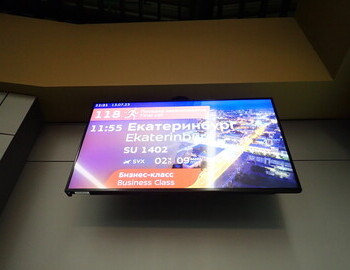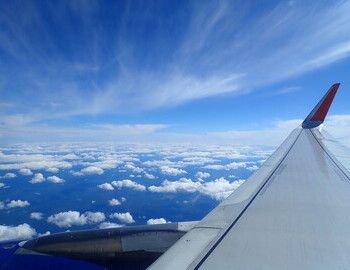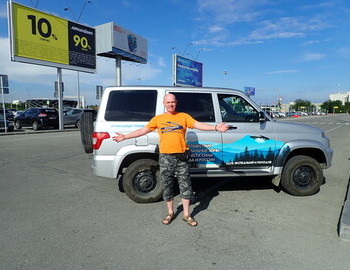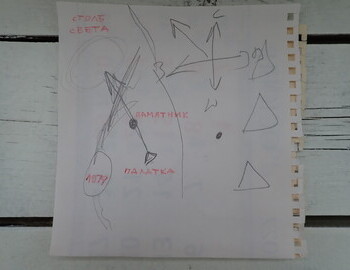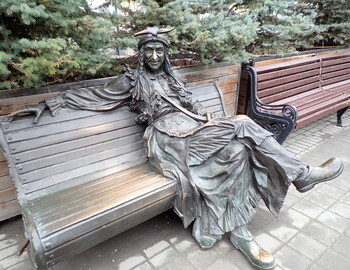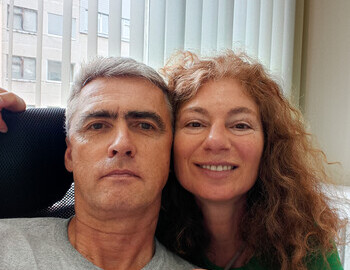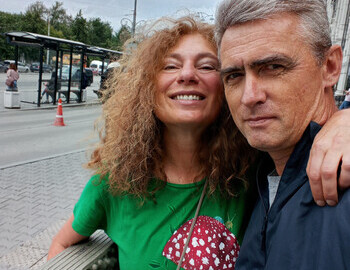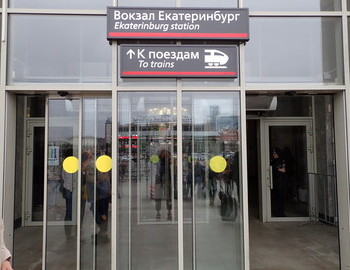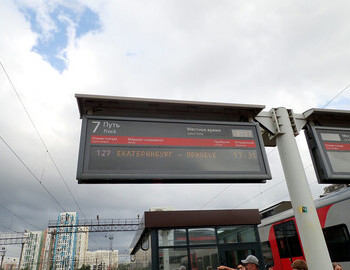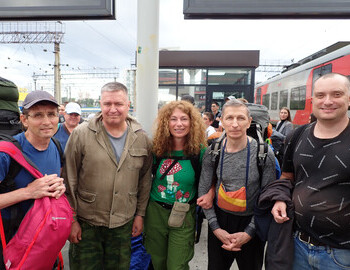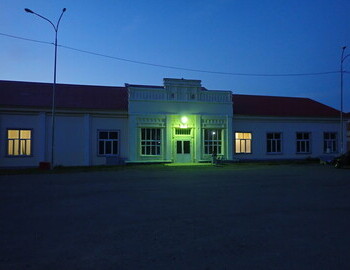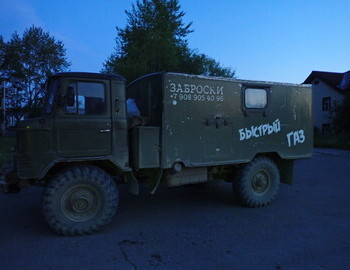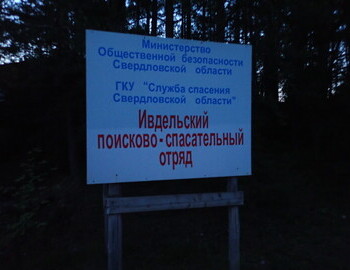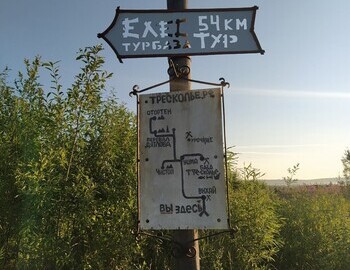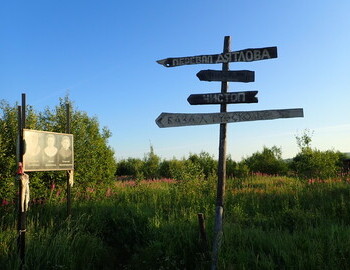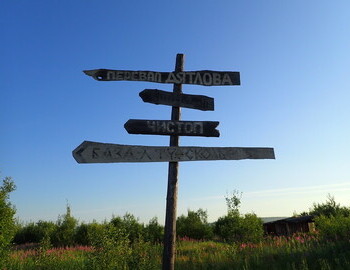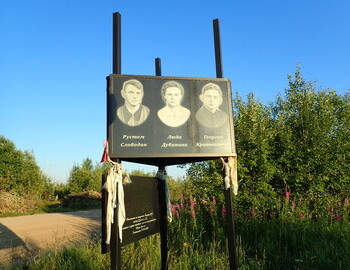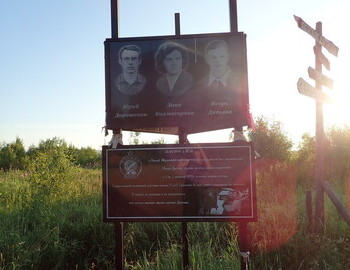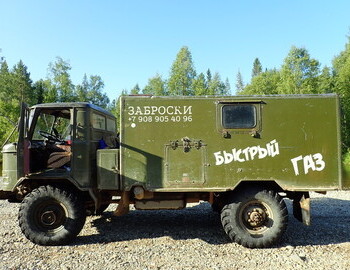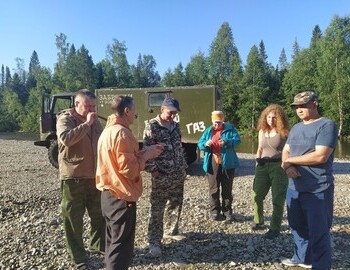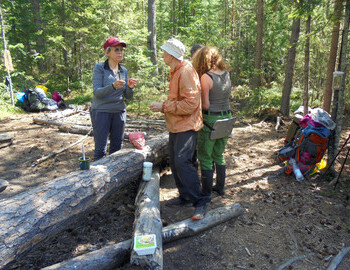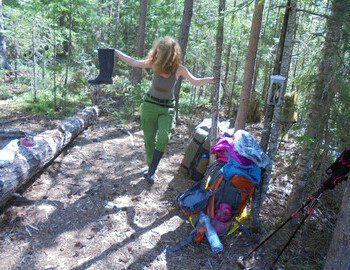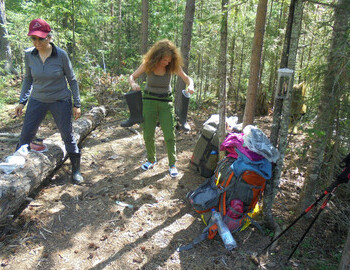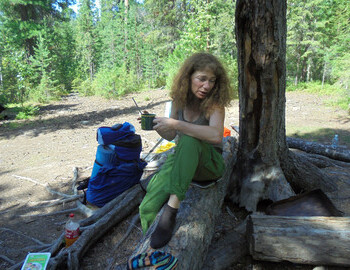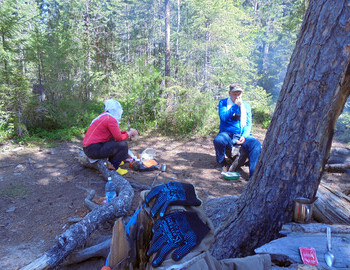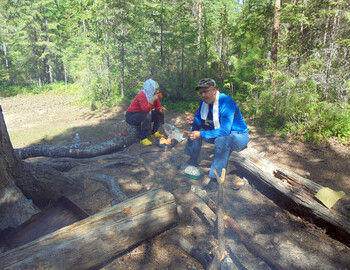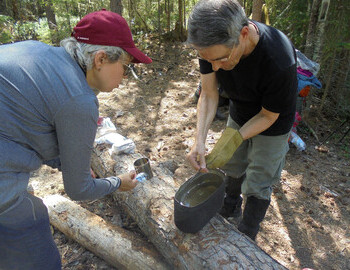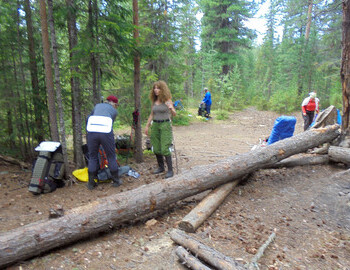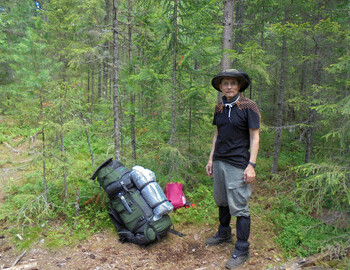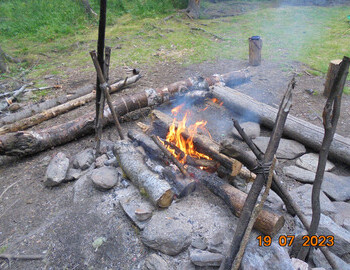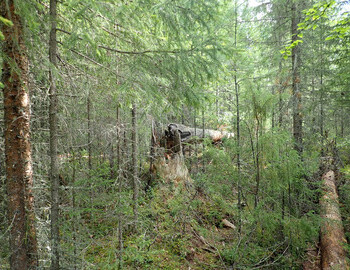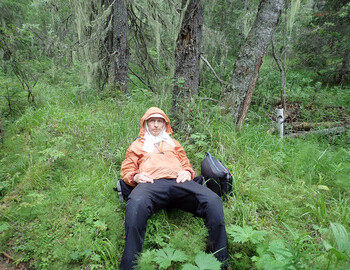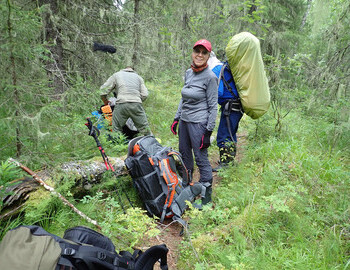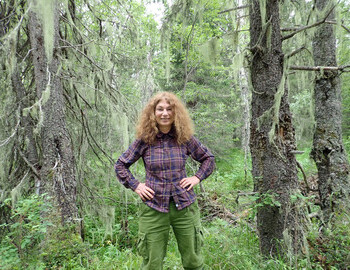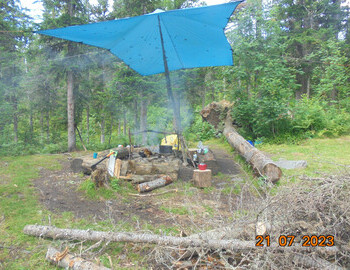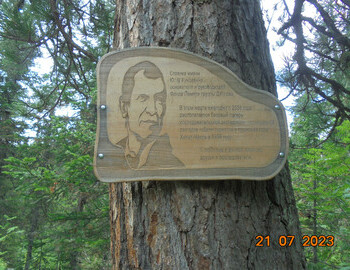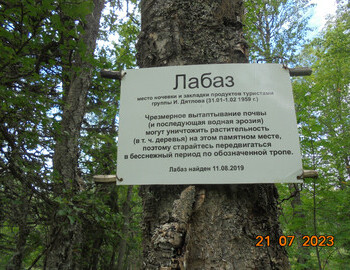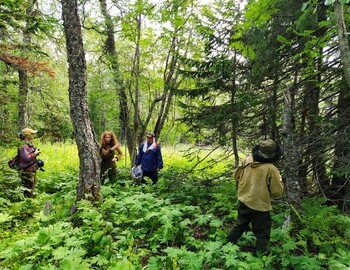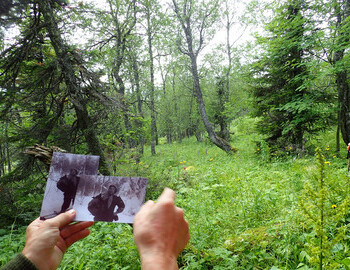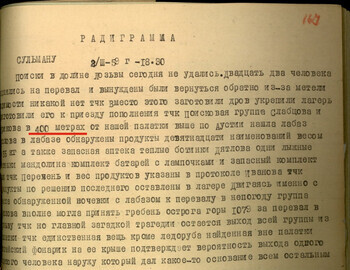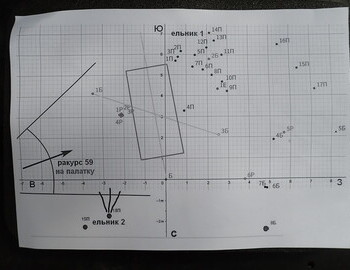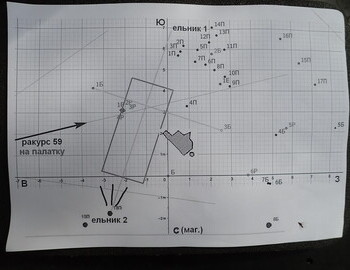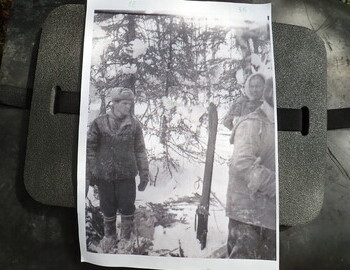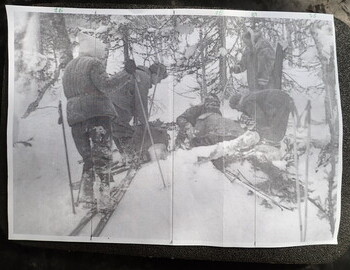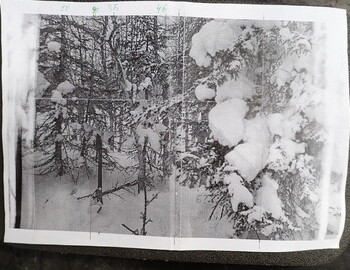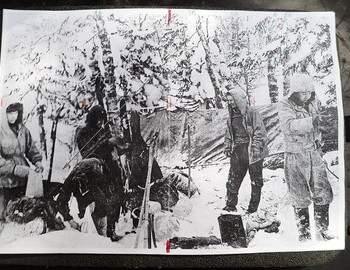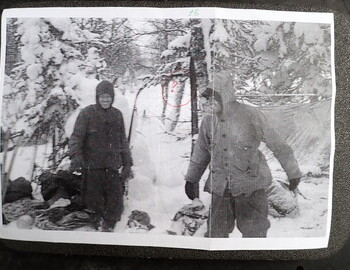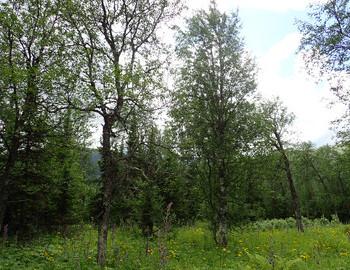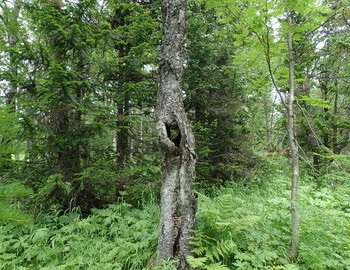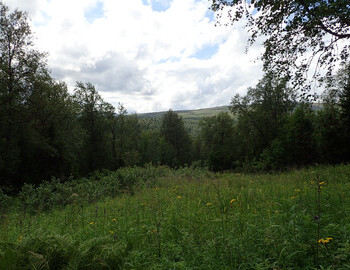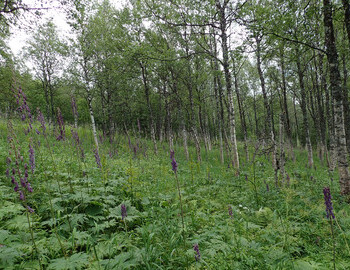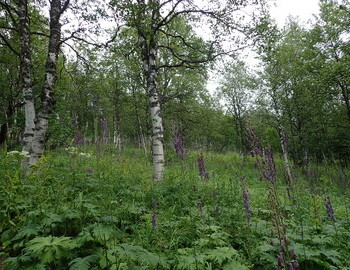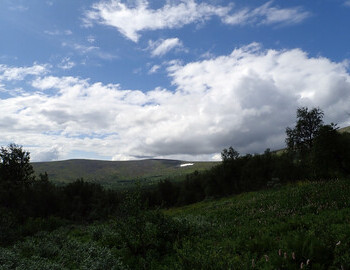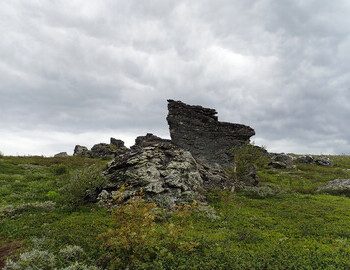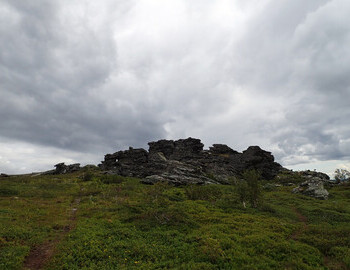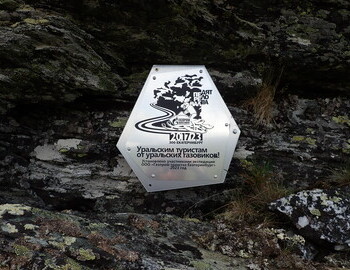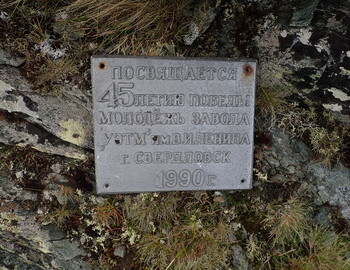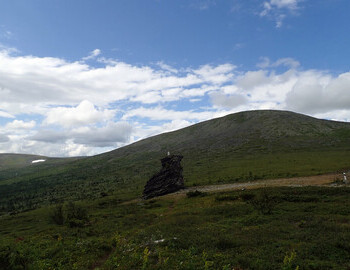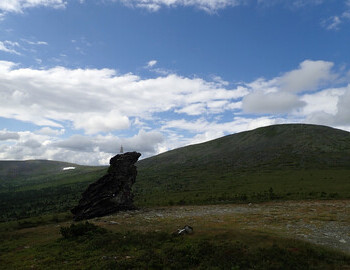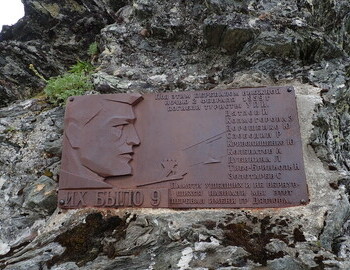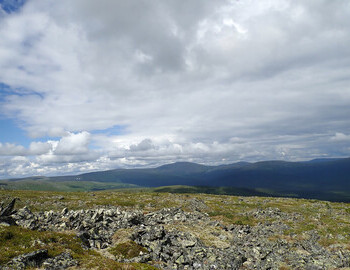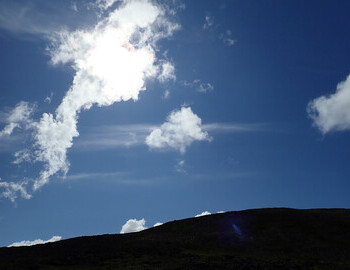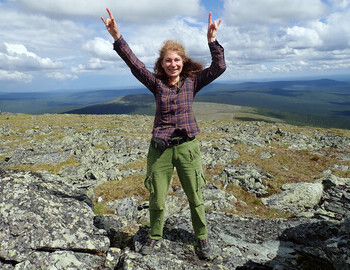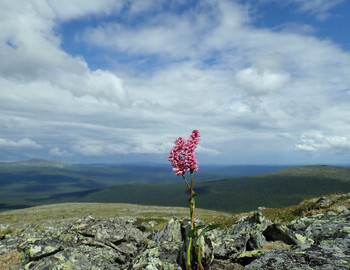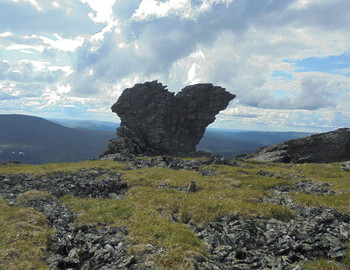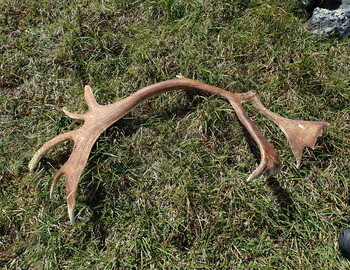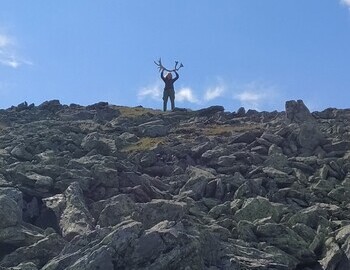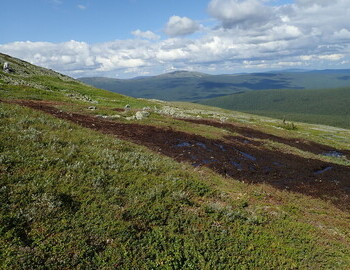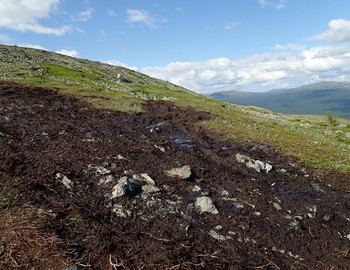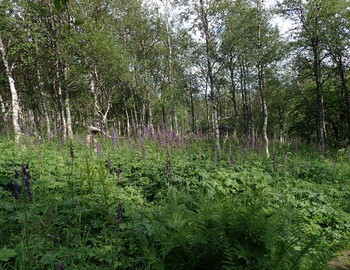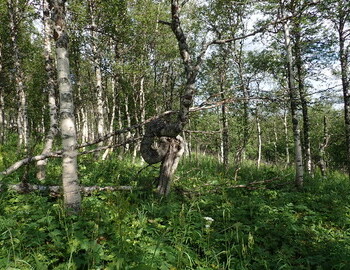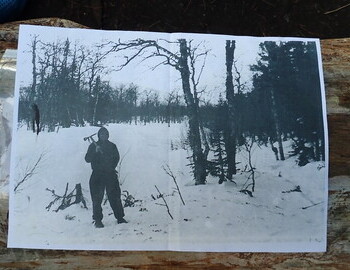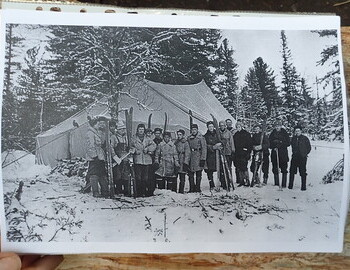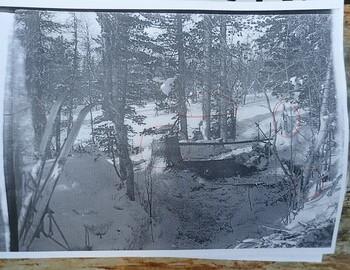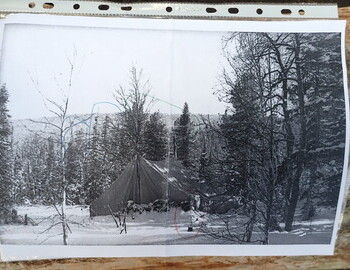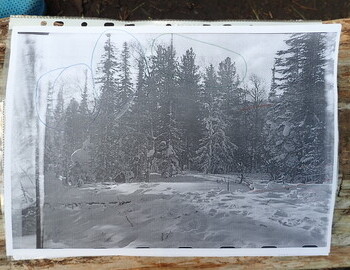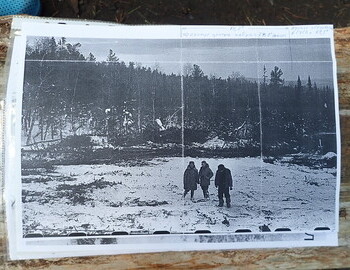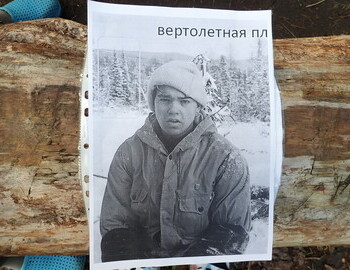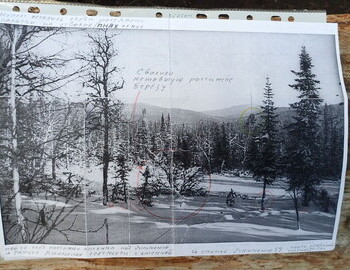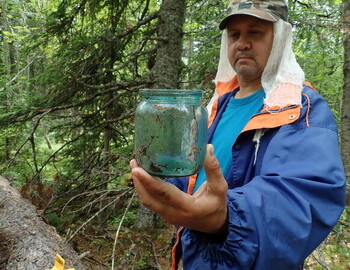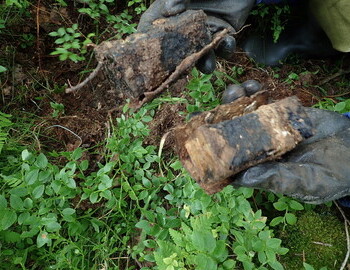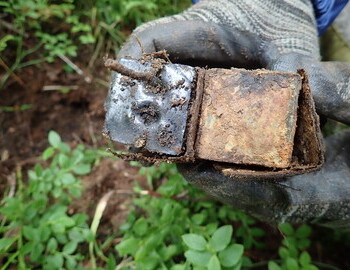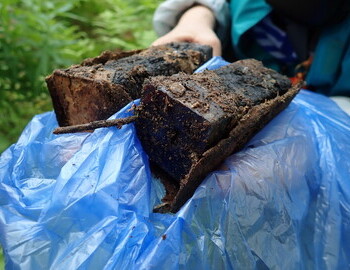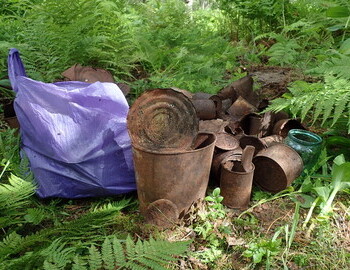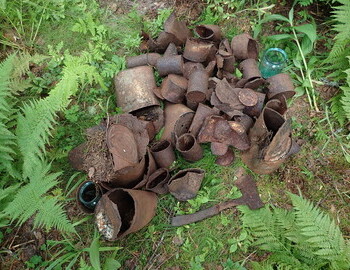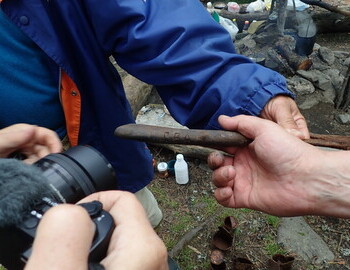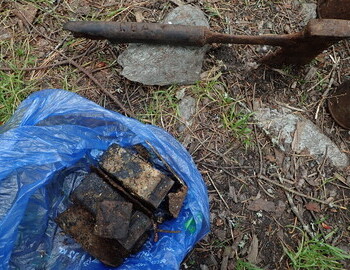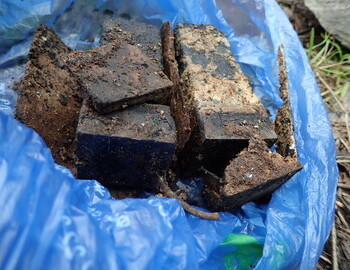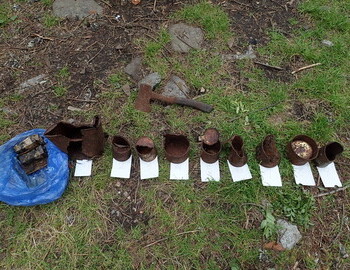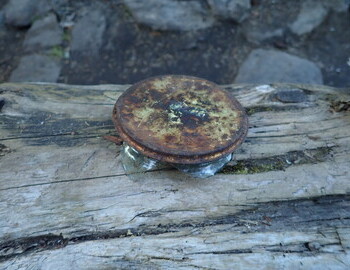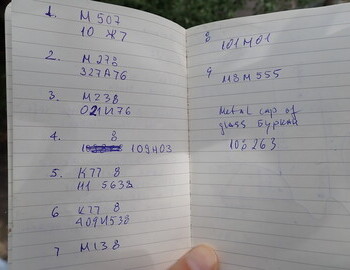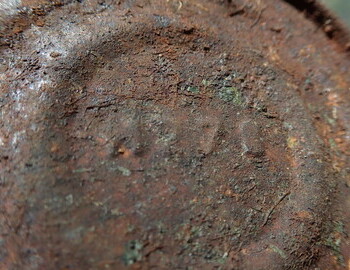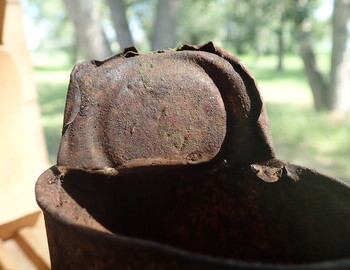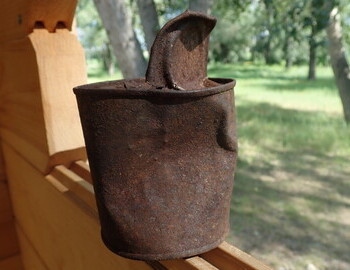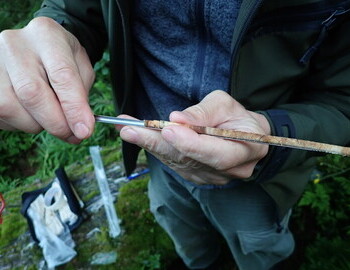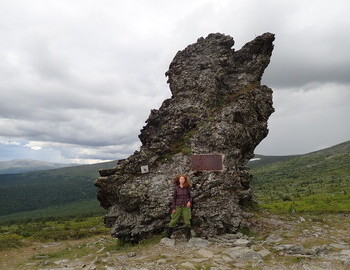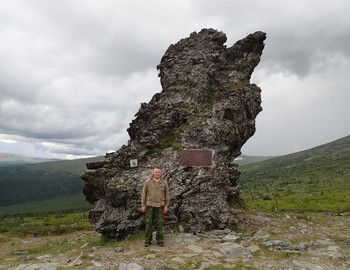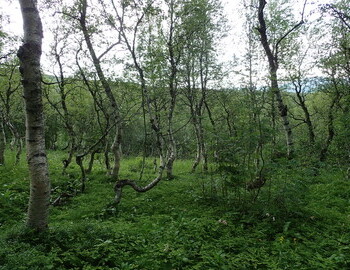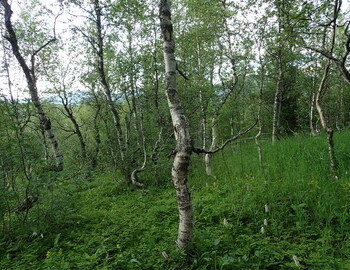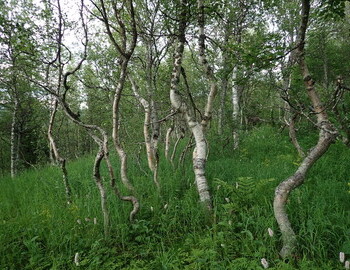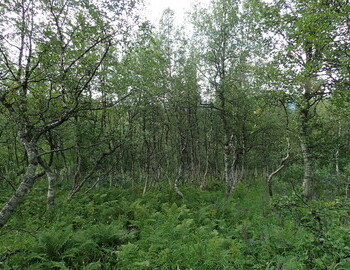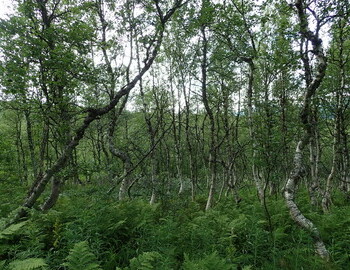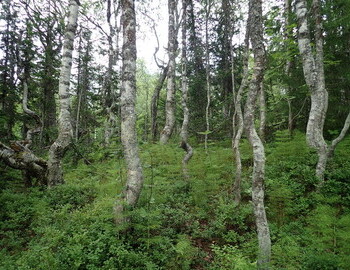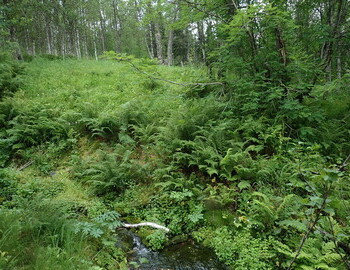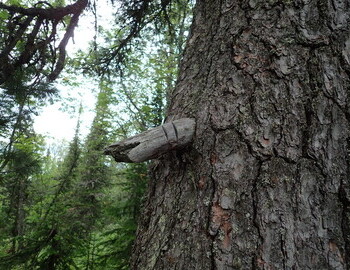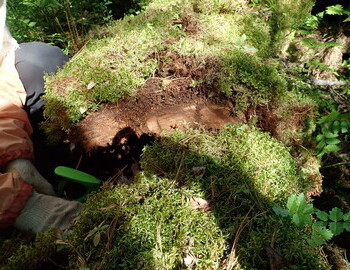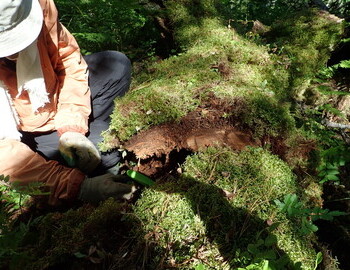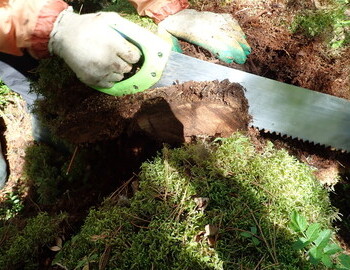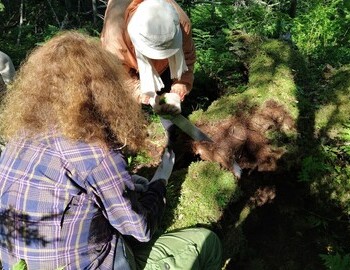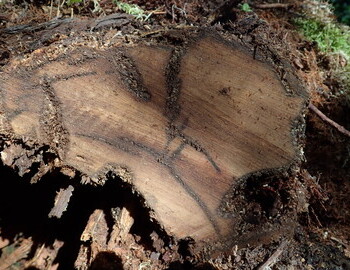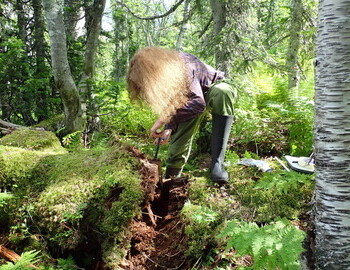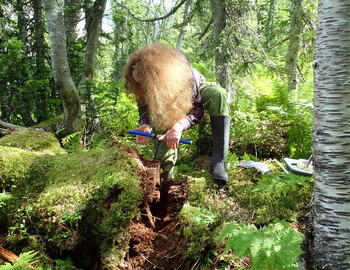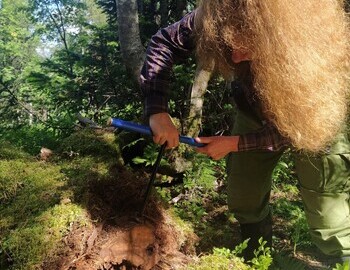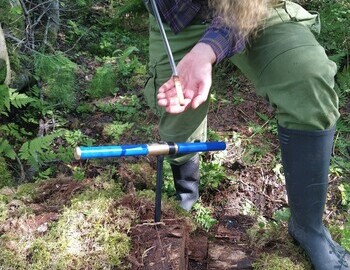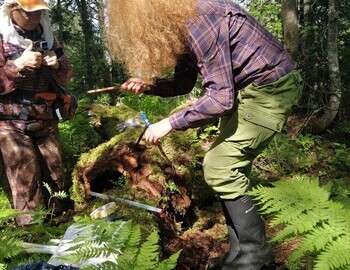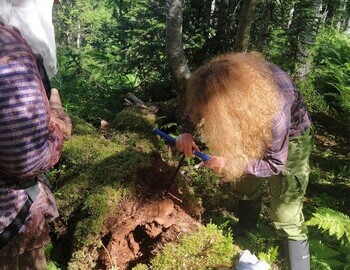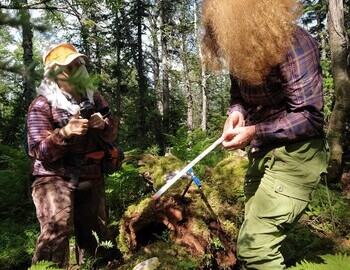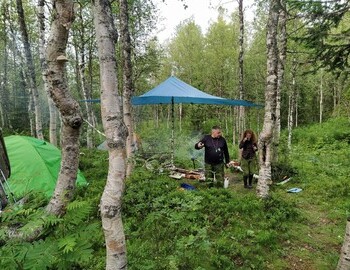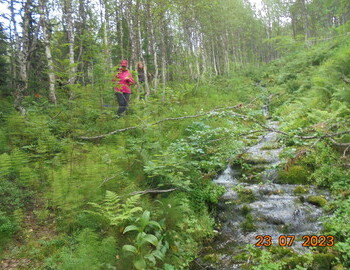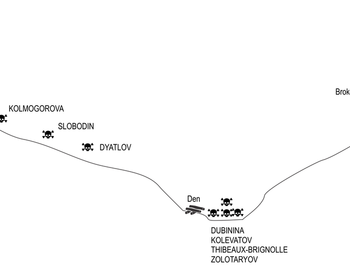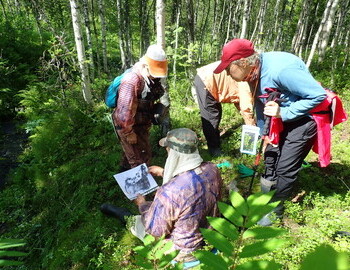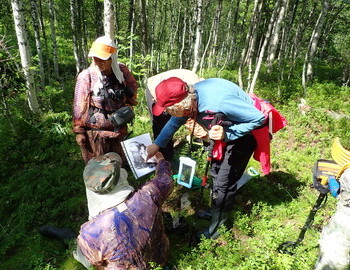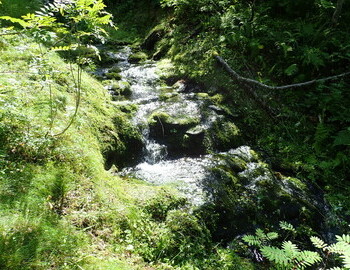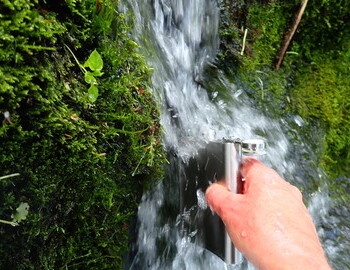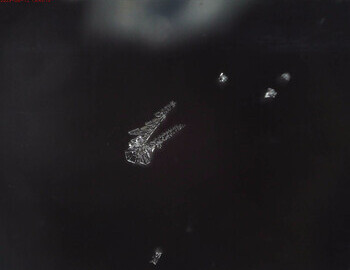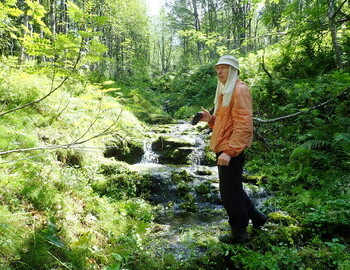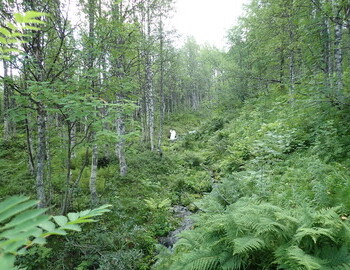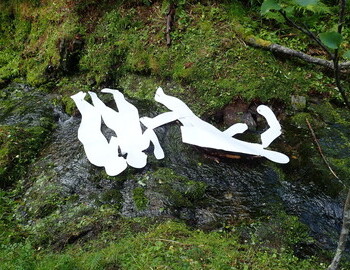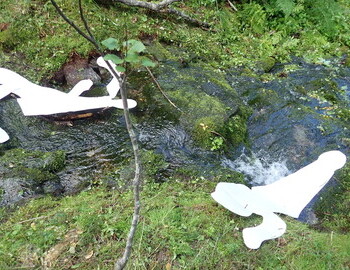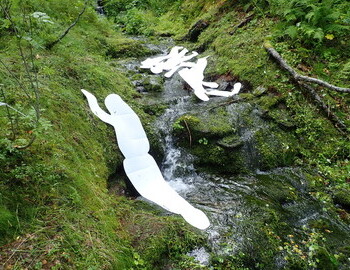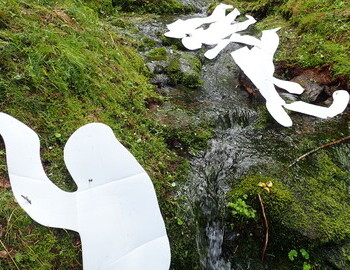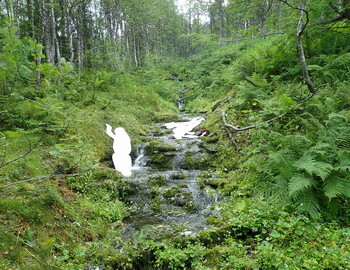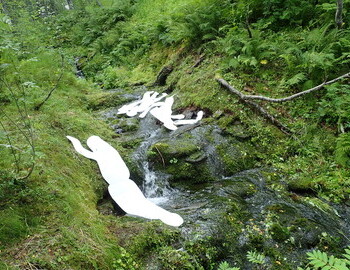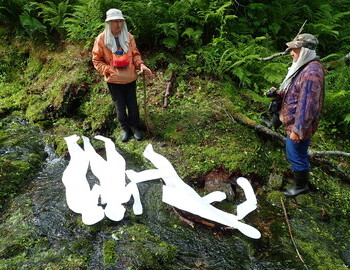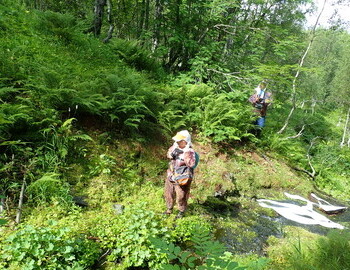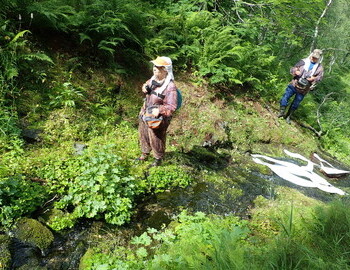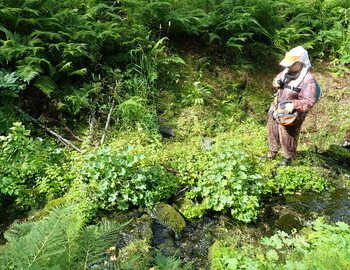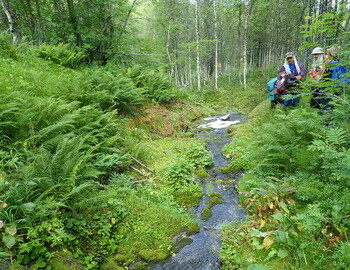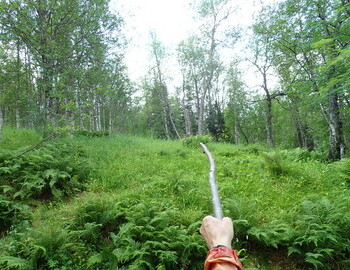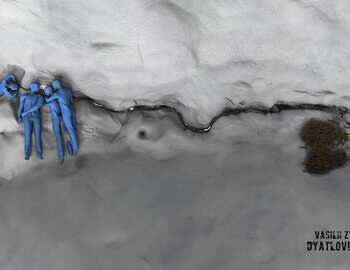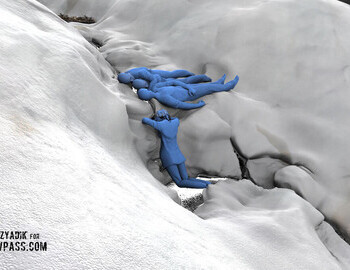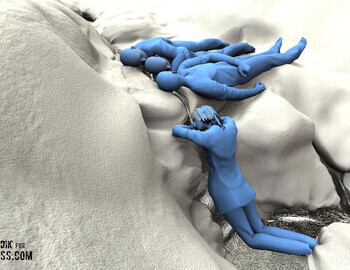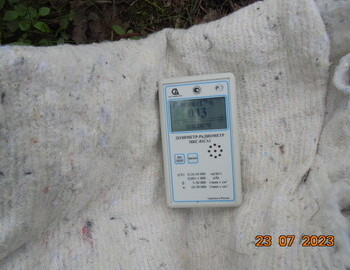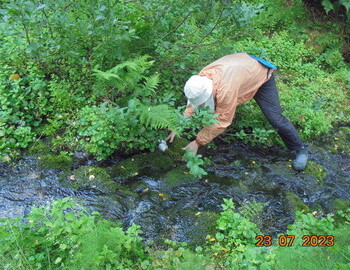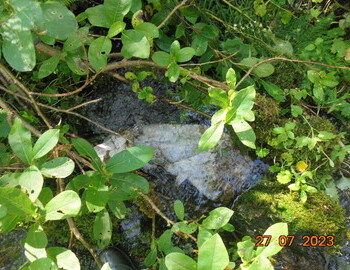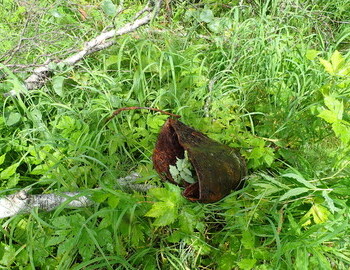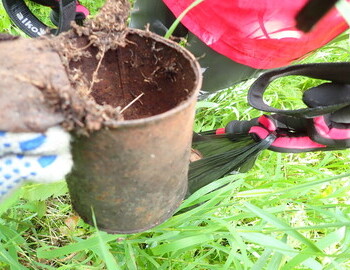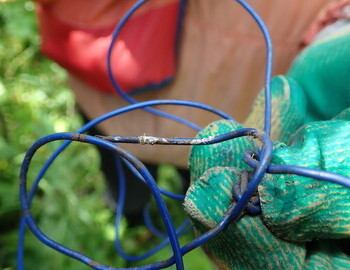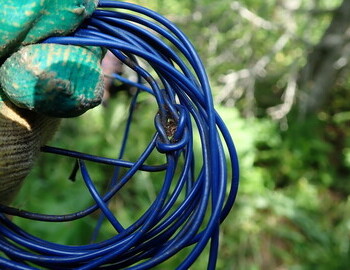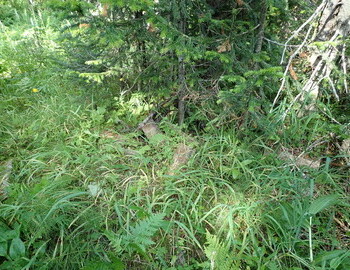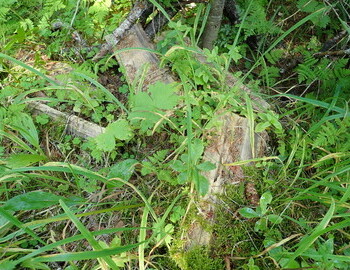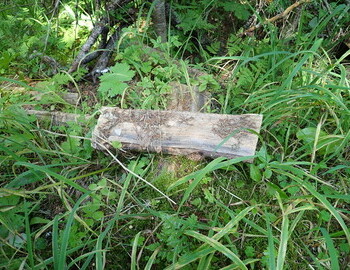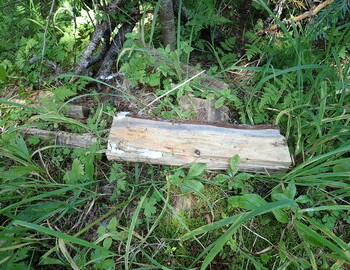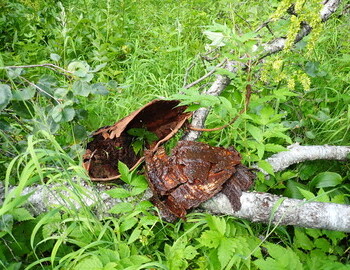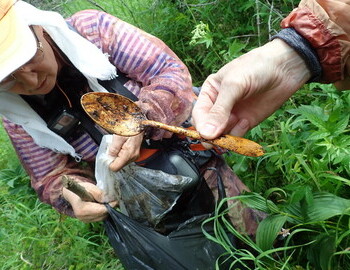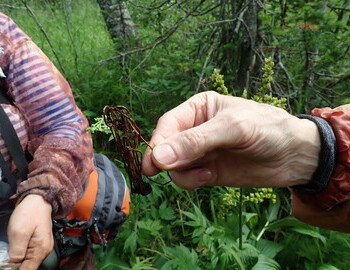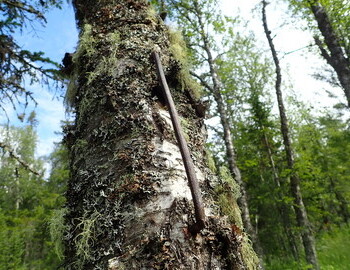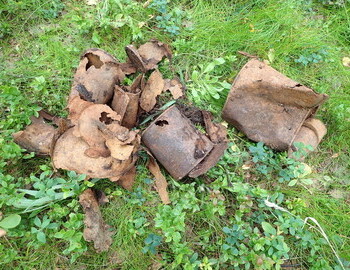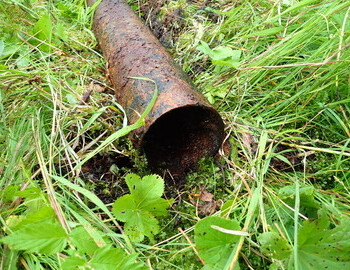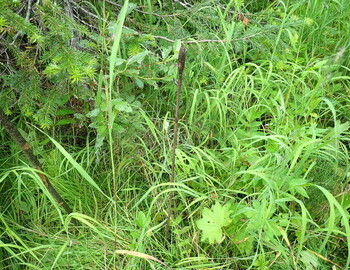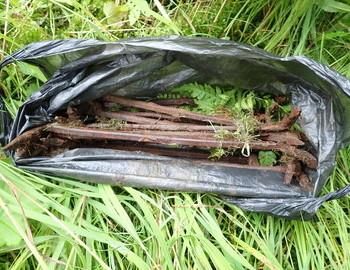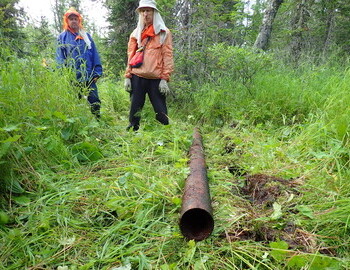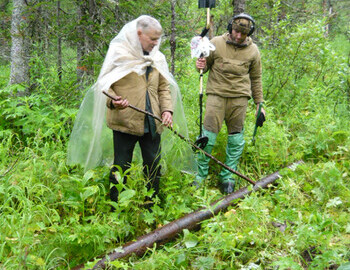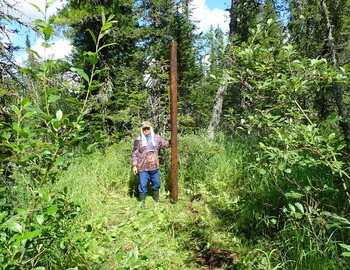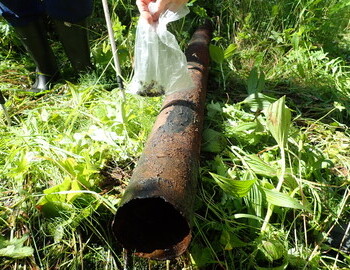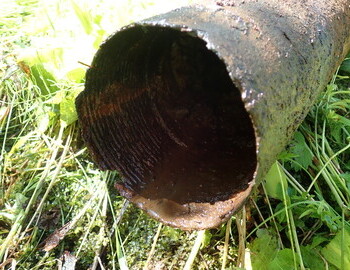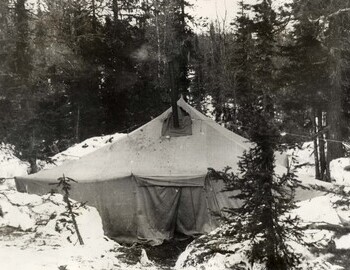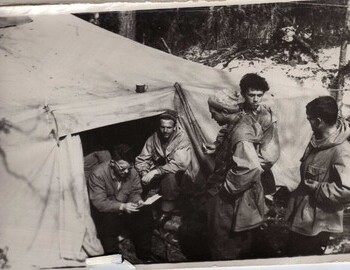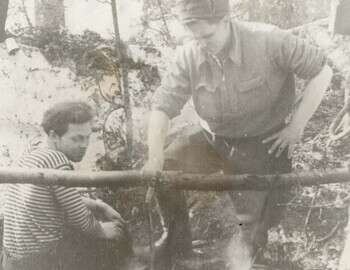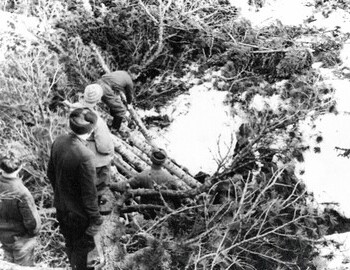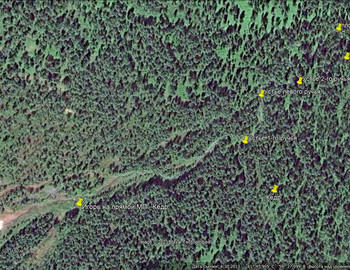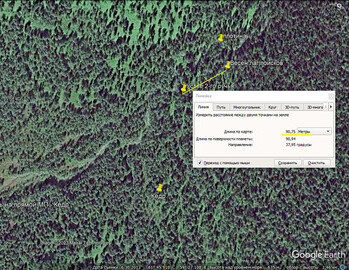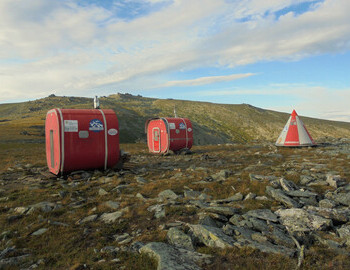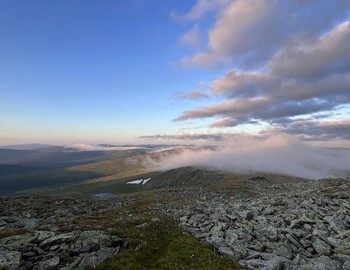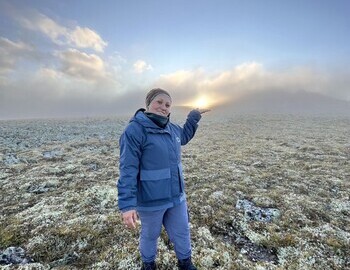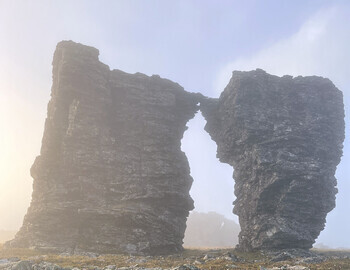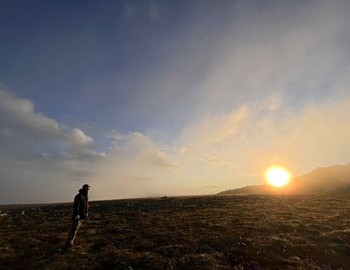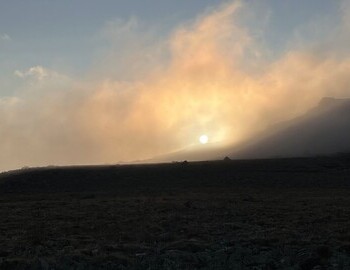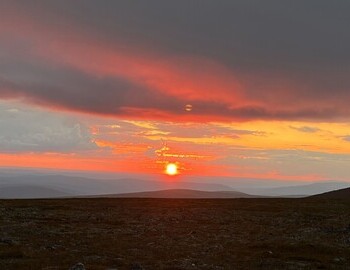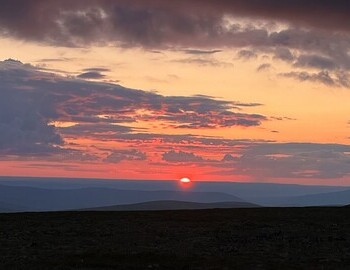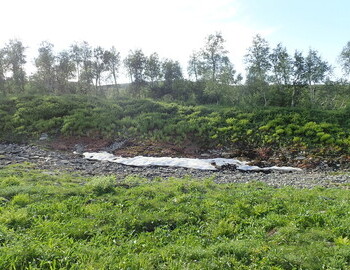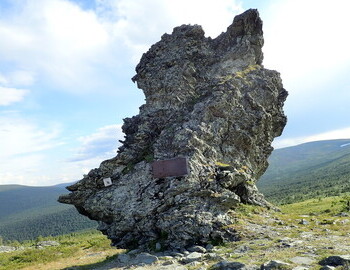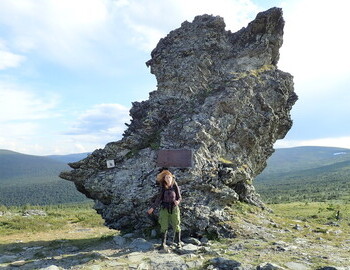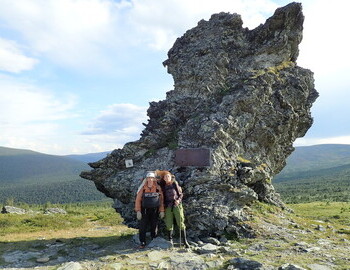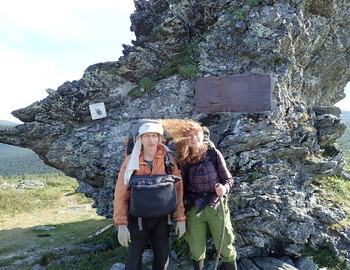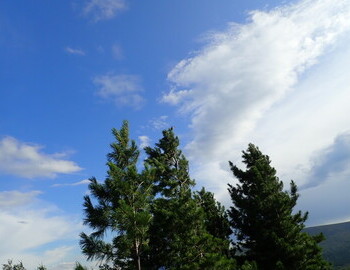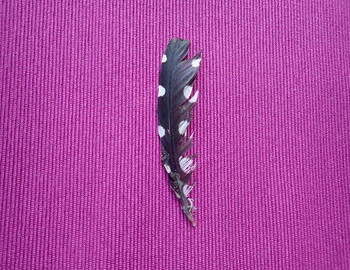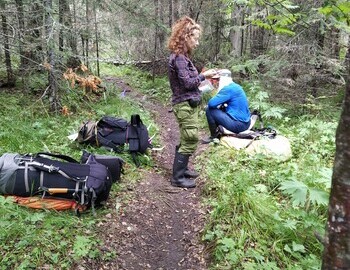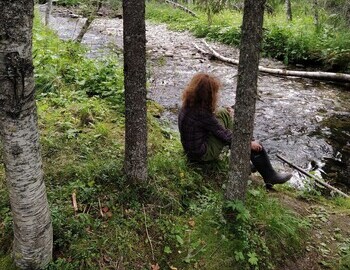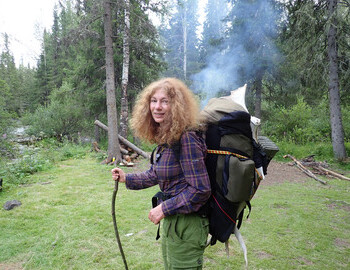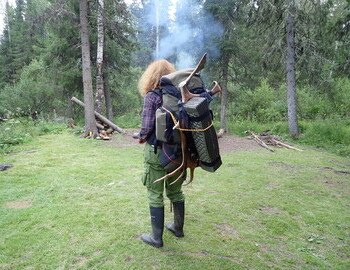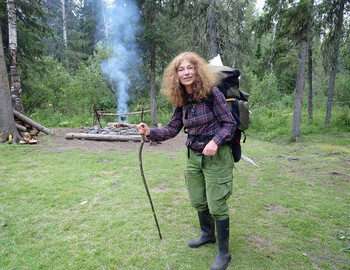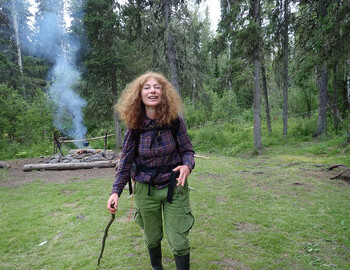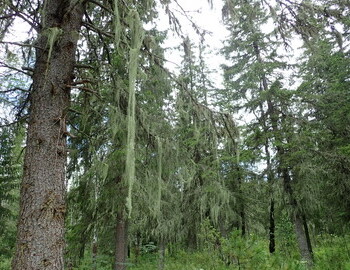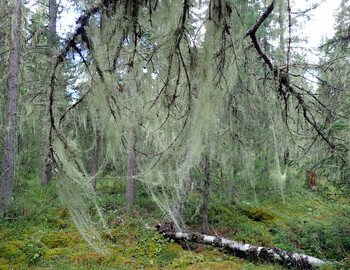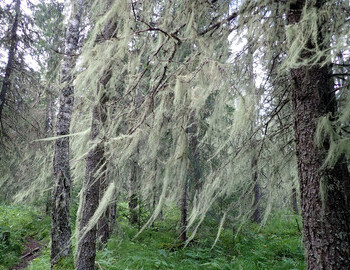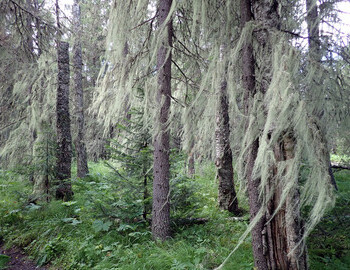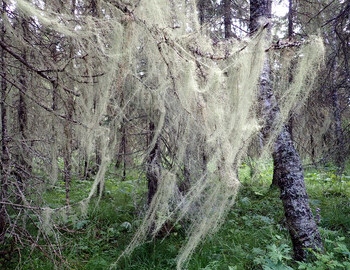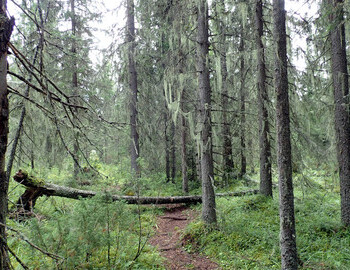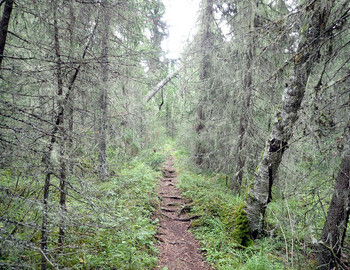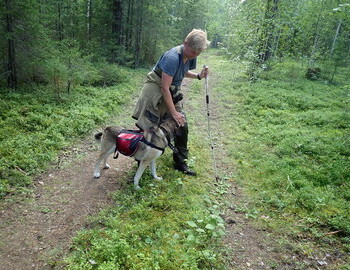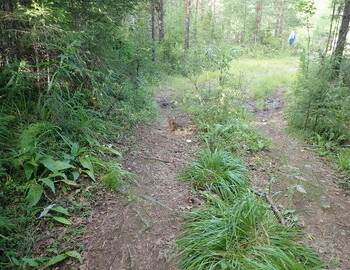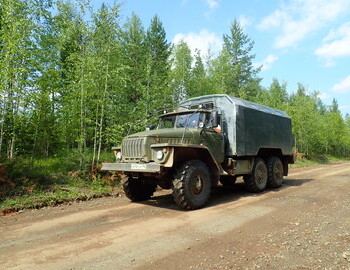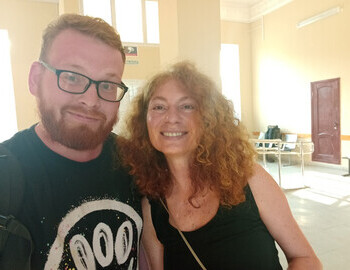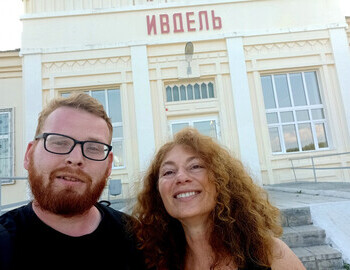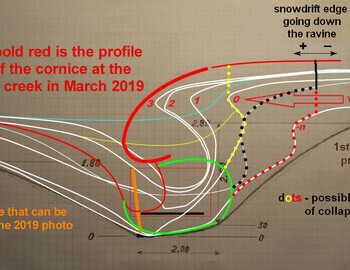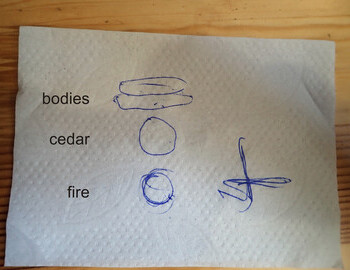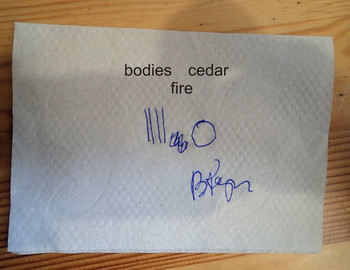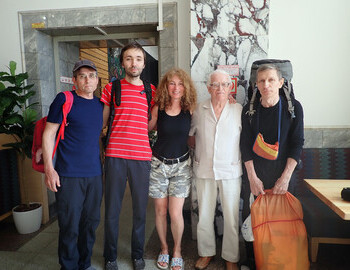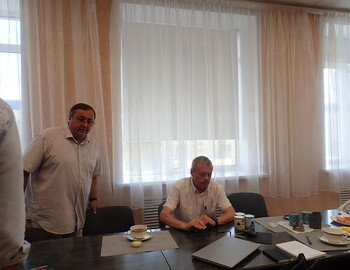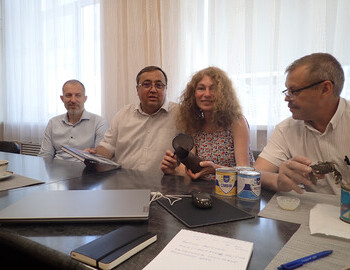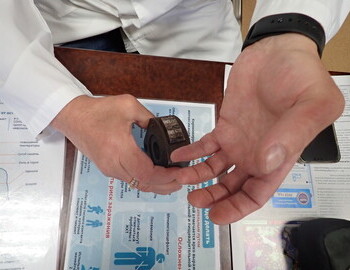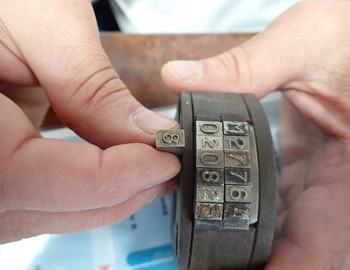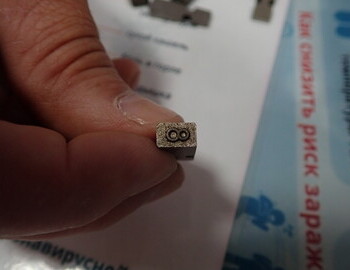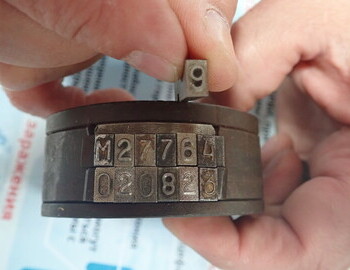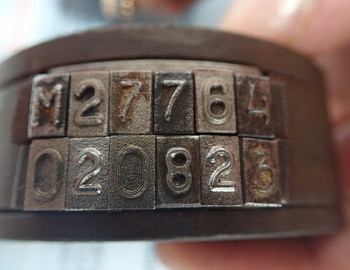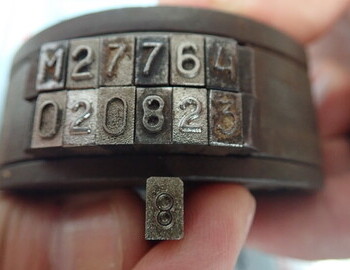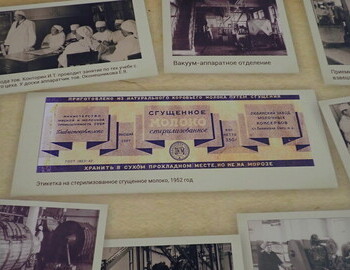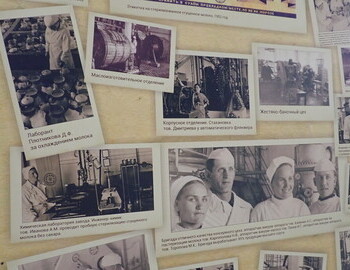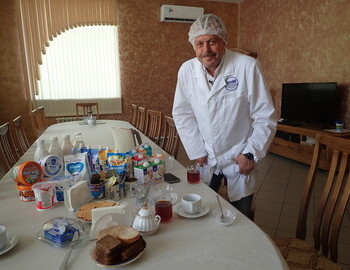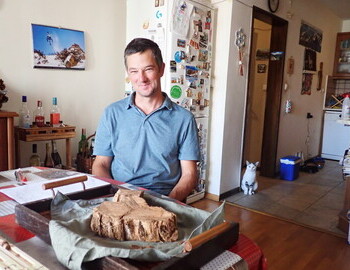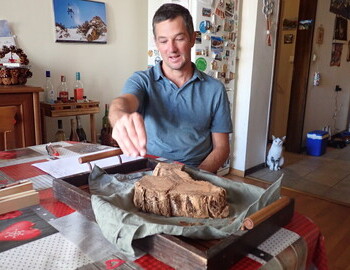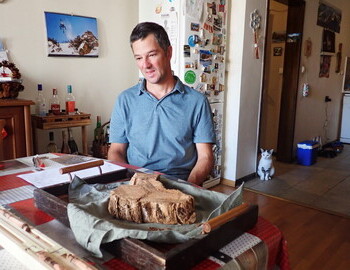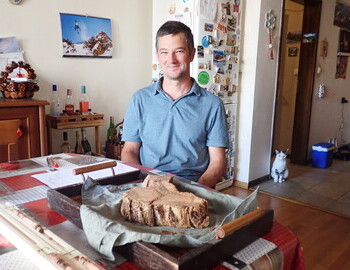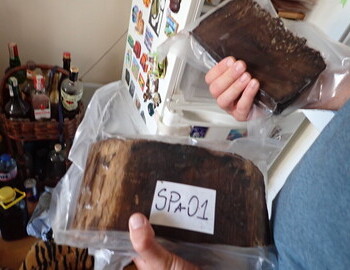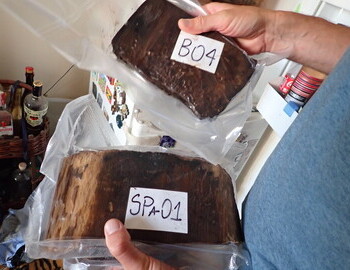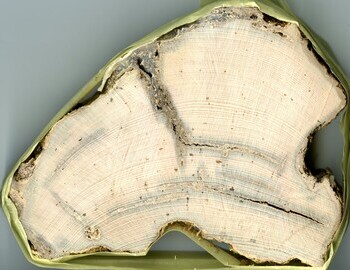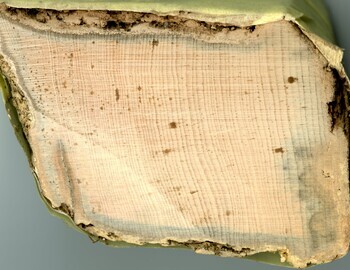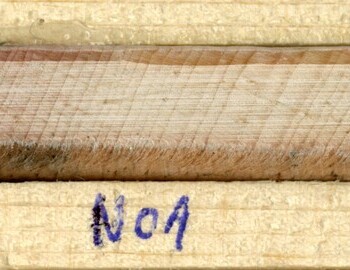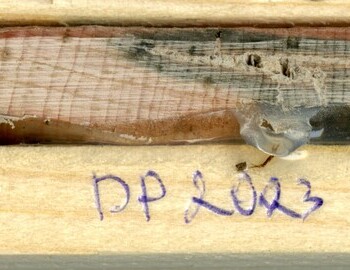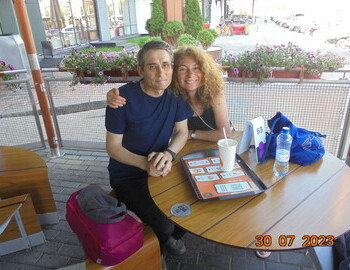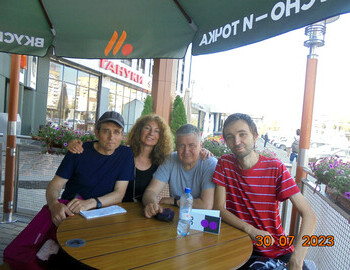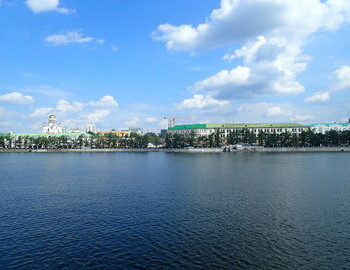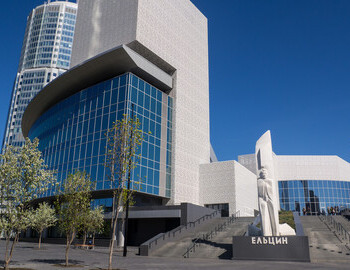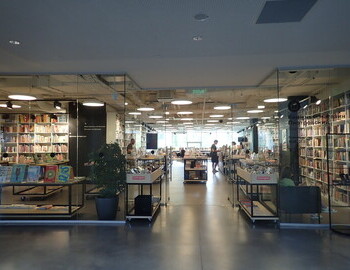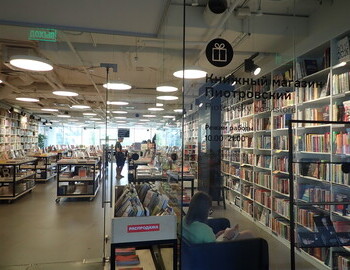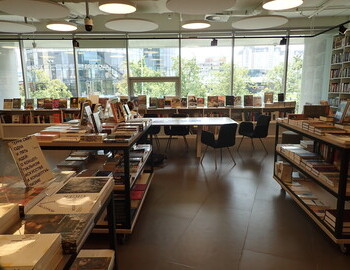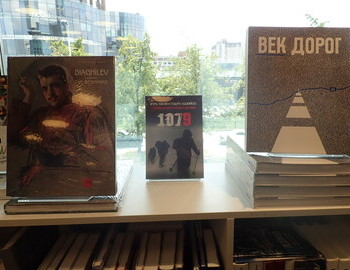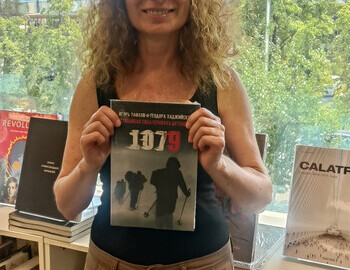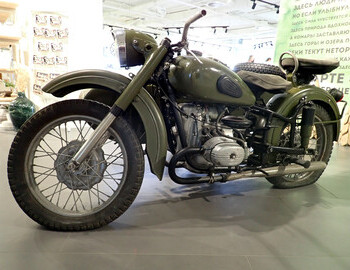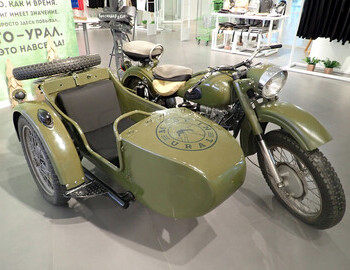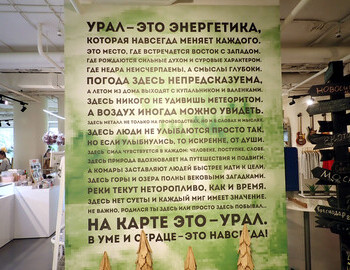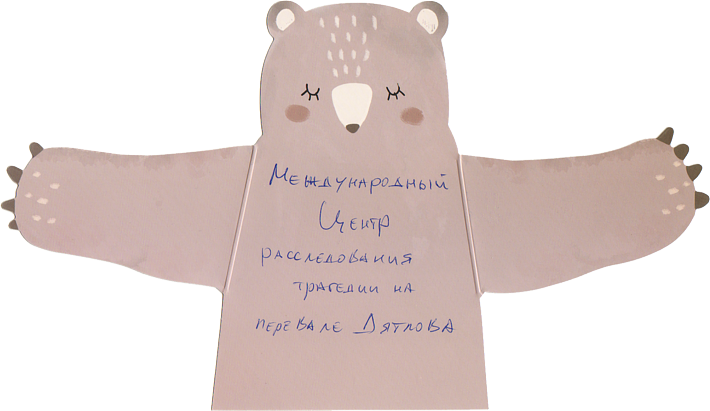
Dyatlov Pass Expedition 2023
International Center for Investigating the Dyatlov Pass Tragedy
The expedition was a total success! Previous year we said that 2022 was the best expedition ever. This year was better. And I know where I will be next year at the same time because the vision of what is hidden and needs to be unearthed is getting clearer by the year. We found huge number of artifacts from the winter search camp and pinpoint the exact location of the spring search camp, both include lots of tin cans with legible stamps, aluminum spoon, axe with initials, buckets, ski mounts, electrical wire, batteries, a metal bracket driven into a tree to stretch the tent, firewood, 3m chimney, avalanche probe etc. The importance of these findings is that we know we can use the same methods to find artifacts left from the Dyatlov group and finally prove where did they camp, where did the tragedy start. Where the labaz was located by Sasha Konstantinov didn't yield anything. Same for the cedar. This still doesn't prove anything because the metal detector used to find the tin can last year Garrett Ace 400i was not with us this year. Everything else we found was close to the surface and the Garrett Ace 150 did the job. Bottom line we need a better metal detector to search for the Dyatlov group campsites. We approach the problem by looking at photos from 1959, trying to match the trees, mountain ridges if visible. After that we start searching, digging, drilling. What this expedition proved is that the trust is down there, in the ground. No more doubts that the artifacts and trees from 1959 are rotting away and lost. We have photographed and protocolled everything. Some of the photos belong to Irina Voronin and the ones with dates on them are provided by Mikhail Neprikayanny (aka Shamil).
Getting there
Labaz
Labaz field work files
The exact location of the labaz, regardless of the hanging sign, hasn't been conferred by anything on the ground. Aleksander Konstantinov thinks he found the labaz judging by the trees from the photographs of both the Dyatlov group and the searchers in 1959. It is yet to be confirmed by tin cans from 1957/58. There are curious things about the labaz in general, was it left there by the Dyatlov group to start with.
Excerpt from "1079: The Overwhelming force of Dyatlov Pass" CHAPTER 23. DYATLOV EIGHT OR NINE.
The cache site (storage) was found on March 2, containing a spare pair of skis, a ninth pair of ski boots, and a ninth pair of warm shoes. Blinov would identify Dyatlov's warm boots, which might have been removed from his body on February 27, just upon discovery, to make hypothermia the most credible cause of death.
In April 1959 Slobtsov gave evidence that the storage had been discovered by a group consisting of himself, Brusnitsyn, Lebedev, and two Mansi people. Later neither Brusnitsyn nor Lebedev could remember their participation in this discovery. Moreover, they could not even remember seeing the storage at all. No one could tell what kind of sketch maps or records were used to find it. According to Yarovoy’s records, the storage was located in the forest quite close to the ski track from the search camp to the pass, just ten meters away. When a storage is set up in a forest, products are usually hung in bags on trees to keep them away from animals. However, in this particular case, it was a pit in the snow lined with cardboard, which is the way to store things in a treeless area. There were skis nearby, with a torn gaiter slipped onto them looking like a flag. It seemed as if some unknown people made a storage similar to another one left by Dyatlov on the slope of height 1079, which had been found thanks to a flag. Some missing items of clothing, food, and other things that belonged to the group were put in it.
The food products, nineteen in total, were given over to the search party. But none of them ever mentioned that while searching, they were also eating from the products left by the perished group. Likely, these products were not much different from the ones sent to them on March 1. And it is impossible to confirm this, as the page listing the food supplies had been removed from Dyatlov’s trek plan, while all other pages remained intact. Who could have done it? On February 28, Tempalov flew away from the pass, taking with him all the group's documents, except for the sketch maps and personal diaries. Note that the names of products from the storage, except for several positions, are present in the daily allowance for various categories of prisoners held in corrective labor camps of the USSR Ministry of Internal Affairs, announced by Order of the USSR Ministry of Internal Affairs №550 of August 16, 1958.
end of quote
After the expedition I met with the general director of the plant that manufactured the tin can I found last year under the cedar. Since the search camp contained similar cans I thought I had lost some of the strength in my argumentation, and it turned out to be the other way around. We sat together: Gennadiy Valter, CEO, Vladimir Klimenko, CTO, Maxim Babkin, head of the tin can production, Ivan Timofeev, deputy director of sales, and they explained and demonstrated why the tin cans found in the search camp are not the same as the tin can found under the cedar. I had all the cards, but needed someone to tell me what they mean, what's in the future or rather read me the past. I am very thankful for the warm welcome.
Kholat Syakhl
The headlights of my personal experience this year on the Dyatlov Pass include but are not limited to getting lost for half a day in the forest where the bodies were found, meeting with a bear with cubs and being scared out of my mind, learning everything has a soul, the fire, the trees, the wind, talking to gods on top of Kholat Syakhl, finding a perfect specimen of shed antlers at height 1079...
Winter searchers camp
The Dyatlov Pass has become a symbol for life journey itself. Before the Pass they were alive, full of dreams, hopes, and love. They climbed up the Pass and were suddenly dead. So I am taking my time looking around where they were still alive. The last campsite that they left on their own accord hasn't still been found with certainty. We know that the labaz was found 400m from the searchers camp. So if we find the winter searchers camp this could be a good starting point. We call it "the winter" camp because after the gap between the time the first 5 and the last 4 bodies were found the searchers camp was moved from South to the North of the Dyatlov Pass. The searchers moved their campsite over the Pass so they don't have to make the journey everyday. We are consulting about our findings with Vladislav Karelin (on the Pass Feb 27-Mar 10) and Vladimir Askinadzi (on the Pass Apr 25-May 5)
First findings 120-150m on the trail up (North) from Kuntsevich camp where our tents are, and then 50m left of the trial. Then in 1959 they didn't burn the trash, just dug up a hole and threw it there. The exact location of the searchers camp has not yet been established. Previous year Oleg and Olga found a much larger quantity of tin cans but they couldn't locate it this year. Also the axe is not clear which year does it belong to. Initials could be Skachkov Vladimir Alekseevich or Skutin Vladimir Afanasyevich. Who is who →
Skachkov was part of the Grebennik search party in the Oyka-Chakur area, nowhere near where the ax was found. Although Skutin was called off and did not go to 1079 he flew to Otorten. He might still have left his ax to Atmanaki. Atmanaki testimony →
Vladislav Karelin said that the landing site was 30-40m from the searchers camp. Commander Potyazhenko refused to land during the search operation but was bringing young pilots to train how to land in "a well" later on. Interview with Potyazhenko →
Vladimir Askinadzi: "You dug up someone else's trash. Such axes were sold ten years after the events on the pass if not later. Although they were called tourist they were uncomfortable and heavy for long expeditions. As for the condensed milk Nikolay Kuzminov and I buried only a few, we flatted them with our boots right there by the fire. We buried them when we cleaned up the territory the last three days. We received condensed milk from the army warehouse in Ivdel. All banks were opened with an axe (and he pointed out this one). We never ate near the cedar, never brought tin cans there."
Dating the ax: "Hi! I watched your video with cans... everything is quite simple with the ax: you just need to see if there is a price on the handle. As far as I understand, from 61-64, after the reform, according to GOST, they began to stamp the price at the end of the handle, in the 60s, such an ax cost 2.5 rubles. If there is no price, then the ax is almost certainly of the 50s, prior to the reform."
The ax has damaged handle so it is not clear if there was a price on it.
Первые находки. С места складирования пустых консервных банок (в 59 их не обжигали на костре) первого лагеря поисковиков в 1959 году перед Перевалом, недалеко от нашей базовой стоянки. Хотя точное место лагеря установить пока не получилось. В прошлом году Ольга и Олег нашли гораздо большее количество банок, но в этом году не смогли их найти. Также топор не ясно, какого года он принадлежит. Инициали могут быть Скачков Владимир Алексеевич или Скутин Владимир Афанасьевич. Кто есть кто →
Владислав Карелин сообщил, что место приземления находилось в 30-40 метрах от лагеря поисковиков. Командир Потяженко отказался приземляться во время поисковой операции, но потом возил молодых пилотов для обучения посадке в «колодец». Интервью с Потяженко →
Владимир Аскинадзи: "А вы ведь раскопали чужой могильник. Такие топоры появились в продаже лет через десять, если не позже, событий на Перевале. Кстати, хоть и назывались топор туриста, но в больших походах не применялся. Очень неудобный и тяжёлый. Мы с Николаем Кузьминовым банки расплющили прямо у костра сапогами. Закапывали уже когда три последних дня убирали за собой территорию, а не каждый день. Мы сгущёнку получали из армейского склада в Ивделе. Все банки открывали топором (Аскинадзи указал на это). У кедра мы никогда не завтракали и не обедали, поэтому там банки нам были ни к чему."
Про датирование топорика: "Привет! Посмотрел твое видео с банками… с топором все просто достаточно: нужно просто посмотреть есть ли на ручке цена. Насколько я понимаю, с 61-64-го после реформы по госту стали писать цену на конце рукоятки, в 60х такой топор стоил 2,5 руб. Если цены нет, то топорик почти наверняка 50х гг., дореформенный."
У топора нет цены на рукоятке.
The Cedar
In order to determine when did this cedar hit the ground we cut off a slice to try to piece together a whole core. The core last year shows rings up to 1948 but then the bark was rotten and the expert couldn't say how many years are missing. This year we came prepared with better tools and deeper knowledge about trees in general.
Last year probing this same cedar left us with mushy core that was very difficult to analyze. But now, lo and behold, we have a perfect sample to take back to Prof. Momchil Panayotov, member of the Dendrology department of University of Forestry, Sofia, Bulgaria.
Our dead cedar doesn't have a center, but we found a radial section with preserved bark and this is where I took three cores from. Dendrology doesn't only count rings, but thanks to the vast database of same type trees in the area, and Siberia in general, it can compare sequence of rings from other trees and tell you what years they correspond to. Here Prof. Momchil Panayotov explains this →.
Bottom line is to determine when the cedar fell all we need is a good sequence at the outer end of its trunk. RIP dead cedar. You will be missed but not forgotten. The incremental borer we used is specialized for old trees and donated by HAGLÖF SWEDEN especially for this purpose.
The Cedar is in perfect condition, except it doesn't produce pine cones. The fallen dead cedar on the other hand is on the ground, covered with green moss, no one is paying any attention to the poor thing, and I had to get all the information I could knowing very well that it would speed up its disappearance but at least it was noticed, it talked.
Experiments at the creek
All the videos belong to Irina Voronina and are published with their original comments from VK.com. She has been to the Dyatlov Pass once before with a tour group, but never on the north side where the bodies were found. Although Irina has read a lot on the subject and she is obsessed like the rest of us, she said that she didn't realize till now that when you come down from the tent first you cross the creek where the bodies in May were found and then climb up to the Cedar where the first two frozen bodies were found. The chronology of discoveries does not follow the terrain and/or the sequence of events the way we imagine it. Please refer to the first scheme below.
Oleg Taymen is searching the creek with a metal detector while we observe a water rat (or a lemming). Both rodents don't hibernate, they stockpile on food to reduce the need to leave the warmth of their burrows. They can eat just about anything. Shura noted that this is the answer to what happened to the missing eyes and tongue.
You can see how close is the den to the bodies and yet they were not found inside the den. How come?
Shura's reconstruction. Aleksander Aleeksenkov is one of the most serious, to date, researchers on the Dyatlov Case. For me, he is a Guru with a huge travel experience from his student days. Shura has been to the Pass countless times, including in winter. He carried out a bunch of experiments, for example, he went down the slope in winter in socks, transported a supposedly wounded comrade down, made a fire near the Cedar... He is an expert in the case files and all finds.
Реконструкция в ручье с пояснениями Шуры Алексеенкова. Это один из серьёзнейших, на сегодняшний день, исследователей по Делу. Для меня он Гуру с огромным туристическим опытом со студенческих лет. Шура был несчётное количество раз на Перевале, в том числе и зимой. Провёл кучу экспериментов, например, спускался по склону зимой в носках, транспортировал, предположительно раненного товарища вниз, разводил у Кедра костёр... Так же он знаток мат. части в области УД и всех находок.
Experiment with water from the creek: I was invited just before the expedition to the Dyatlov Pass at the presentation of Petar Ivanov's latest book "The Nature of Holy Water". In this book the emphasis is on the innovative method the author is using to produce and capture the crystals. In 2022, he equipped a small laboratory in home conditions, in which he studied the growth of crystals from saturated water vapor on various water samples injected into a chamber in which a constant temperature of minus 15 degrees Celsius was maintained. The resulting crystals are observed and photographed with a microscope equipped with a digital camera. The resulting crystals are observed and photographed with a microscope equipped with a digital camera. He published the results of his experiments in his book "The Nature of Holy Water" published in a small edition in 2023. I brought to the author a vial with water from the sacred river Gang that I had from my trip to India in 2017. The gift was greatly appreciated, the interest in my research was reciprocated. In the presentation Petar Ivanov showed how the structure of water is influenced by exposure to sounds and visuals. He asked me If I wanted my crystal done and he received more than he bargained for, 10 photos if you count mine. Guess who the other 9 are. I also brought with myself a metal flask, as instructed by Petar Ivanov since it forms a Faraday cage to limit the exposure of the water during my trip back. Yesterday I received the crystal of the water I brought back with me from the expedition. Read more →
Mikhail Neprikayanny (aka Shamil) experiment with a rag submerged in the creek for 4 days. "Rakitin and others previously claimed that the first stream was full of chalcedony, which dyed the clothes of the four. Clothes after being hung to dry allegedly acquired a red or purple hue. I soaked a white rag for four days and absolutely nothing happened. Conclusion is that the coloring of the four's clothes is not because of the creek."
Михаил Неприкаянный (он же Шамиль) экспериментирует с тряпкой, погруженной в ручей на 4 дня. "Ракитин и прочие ранее утверждали что в первом ручье полно хальцедонов которые и окрасили одежду четверки. Одежду после того как повесили сушить приобрела красный или фиолетовый оттенок. Я на четыре дня замочил тряпку белую и ничего не произошло ровным счётом. Вывод один окраска одежды четверки не из-за ручья."
Shura brought human size silhouettes to the Dyatlov Pass cut out from plastic that he called mannequins. Alekseenkov was looking for a stone in the river that might have been the cause of the traumas on Thibeaux-Brignolle, perhaps Dubinina and Zolotaryov. I found his theory published by Helga in 2012. When we met with Karelin after the expedition on July 30, 2023, Shura was showing him schematics of snow drifts on both sides of the creek which he said could have collapsed on top of the hikers huddled in the den. Here are videos with experiments:
Expedition March 2019 | |
| Photo album 1 | GPS track |
| Photo album 2 | Fall through the cornice: |
| Photo album 3 | Video clip 1 |
| Photo album 4 | Video clip 2 |
Shura said: "All I can tell is that something happened very suddenly that caused the tragedy. Everybody started dying after that." He said that the ones that were still alive would have been psychologically affected by the demise of the strongest members of the group. As the situation was so intense, they might have just given up fighting for their lives, losing all hope and the will to live.
Spring searchers camp
We found the May 1959 searchers camp 250 m from the Cedar. Unearthed mother lode of artifacts. This is indicative that each camp site from 1959 can be identified if we know where to look. A lot more needs to be done. My two goals for this trip were to obtain better core from the fallen cedar and to find the pipe photographed with Yuri Yudin in 2008. While the first goal was overachieved we did not find the pipe in question but did find the second best thing - the stove pipe that was the chimney in 1959 searchers tent. This is good because it means what I am looking for is still out there. I want to find the geologists campsite. As you can see each expedition left piles of metal objects that are still in the ground. I was frantically looking for the pipe while my comrades were worrying for me being lost for the second time after my encounter with a bear with cubs the previous day. I am still processing this.
Findings from the May searchers camp. Notes from my notebook:
- Tin cans, stamps unreadable (the corrosion is the same as on the can found under the Cedar)
- Buckets x2 one forged bucket, another with peeling enamel
- Ski mount
- Wire stranded 0.75 mm2 blue insulation, twisted and tied in a knot. At one end it had white oxide, presumably from the battery terminal. Most likely used for flashlights in tents (miner's light bulb)
- Copper wire
- Steel pipe 317 cm, diameter 120, thin wall 2-3 mm, thread 6 cm deep at one end.
- The pipe was completely and covered with ground, flat surface.
- Probe 105.5 cm one segment, avalanche
- Metal planks of unknown purpose
- Staples from the dam 13 pcs
- Metal bracket nailed in a birch
to hang the tentmost likely for stabilizing the pipe (used as a chimney) - Fire wood
Vladimir Askinadzi: The pipe is ours. The wire, probably, is also ours - Nedelin's household. Batteries are also his - the anode power of the radio station. We did not drive the staple into the birch. I, having spent many days and months in the forest, treat everything as if it were alive. It seems to me that the birch is hurt, like a person from such a barbaric operation. For the needs of the camp, both in winter and summer, we used only dead wood.
Что мы нашли в майской лагере поисковиков. Записки из моего блокнота:
- Банки, штамповки нечитаемый (сохранность банки то же, что и банка под кедром)
- Ведрах x2 кованое ведро, разрушенный эмаль
- Крепление лыжи
- Провод многожильный 0.75 мм2 синий изоляции, имел закрученную форму и завязан узелком. На одном конце имел окисла белово предположительно от клемма аккумулятора. Скорее всего использовали для фонарики в палатки (лампочка шахтера)
- Проволока медная - лакированная изолация на медном проводе
- Стальная труба 317 см диаметр 120, стеночка тоненькая 2-3 мм, резьба на одном конце глубина 6 см.
- Труба была вполне закрита землю, ровно.
- Щуп 105.5 см одно колено, лавинной
- Металлические пластины неизвестного предназначения
- Скобы на плотине 13 щук
- Металлическая скоба вбитая в берёзу
для растяжки палаткискорее всего, для растяжки печной трубы - Дрова
Владимир Аскинадзи: Труба - наша. Провод, наверно, тоже наш, - хозяйство Неделина. Батареи тоже его - анодное питание радиостанции. Скобу в берёзу мы не вбивали. Я, много дней и месяцев проведший в лесу, отношусь ко всему, как к живому. Мне кажется, что берёзе больно, как человеку от такой варварской операции. Для нужд лагеря и зимой и летом мы использовали только сухостой.
The videos belong to Irina Voronina and are published with their original comments from VK.com.
We managed to find the location of the May searchers camp on this first attempt. The location is on the other side of the pass, not far from the Cedar.
Ещё в этот раз удалось обнаружить месторасположение майского лагеря поисковиков, который находился уже за Перевалом, недалеко от Кедра.
You can see the harsh nature of the Northern Urals. And we are looking for Teddy, she went to look for a pipe, either from the stove of the searchers, or geologists for drilling, this is important for her theory. But the fact is that the day before she got lost while crossing the Pass and at the same time stumbled upon a bear. Thank God everything ended well. We always go around with whistles, firecrackers, flares... Bears are, perhaps, the greatest danger in this neck of the woods.
Суровая природа Северного Урала. А мы ищем Тедди, она ушла искать трубу, то ли от печки поисковиков, то ли геологов для бурения, это нужно для ее версии. Но дело в том, что накануне она потерялась при переходе через Перевал и при этом наткнулась на медведицу. Слава богу, всё закончилось хорошо. Но потом мы ходили со свистками, петардами, фальшфейерами. Медведи - это, пожалуй, главная опасность в этих краях.
Night on Otorten
Otorten was the final destination of the Dyatlov group. We shared a ride with Elena and Timur Bakaev who were returning from a night at Mt Otorten. They gave me the last piece of information about my encounter with the bear. Now I had the whole picture.
Going back
Meeting with Vladislav Karelin
It became a tradition after the expedition, before the researchers all catch their trains and planes home, to meet with Vladislav Karelin who lives in Ekaterinburg. See photo from 2022.
There are so many questions that we can ask the searchers that took part in the discovery of the bodies in 1959. Here are some of Karelin's answers from our meeting on July 30, 2023.
First it will be beneficial if you read Karelin's recollections, an article in Komsomolskaya Pravda 2021. There you will see that Karelin is remembering the stone ridges from the tent down teh slope the the Cedar to be covered with ice. He reemmbers a particular area and only this area to be covered with ice as a result of some explosion. In the meeting this year Alekseenkov showed Karelin photos of iced areas on the pass from the same time of the year (February-March). Karelin answer was that he doesn't believe in a photo where it is written "ice". It has to be examined how ofthen does it happen. I dug up Shura's theory from 2012 but it is now quite different. The hikers in the den died from the snow accumulation that collapsed on top of them, everything is different. I won't take the initiative to explain it before he does.
On my question why would Dyatlov decide to pitch a tent on the slope Karelin answered "I would never put a tent there. We always hung the tent in the forest. There must have been extreme circumstances to do this." Alekseenkov countered that there are plenty of treks where the tent was pitched in a treeless area. To this Кarelin answered that if you do this when you could have reached the treeline then you will be taking unnecessary risk and will be disqualified i.e. this trek will not count in your hiking classification. We know that this was important for Zolotaryov at least. The group won't deviate from their plan unless there is an emergency.
Then I said to Karelin that I can't shake the feeling that the fire found by the cedar is not made by the Dyatlov group but a third party that was handling the bodies. They made the fire for themselves and laid the bodies on the other side of the cedar so they will not see them. And I drew on a napkin. To this Karelin said that's not true, the bodies were found by the fire. Shura said that that this is the problem with recollections, that it happen so long ago that the memories became what you want them to be. And Shura drew his own napkin. You can see 1959 photos from the area, how do you think the bodies, cedar and fire were lined up?
Lyubinskiy Molochnokonservnyy Kombinat
Part two for my trip was meeting with the general director of the plant that manufactured the tin can I found last year under the cedar. Since the search camp contained similar cans I thought I had lost some of the strength in my argumentation, and it turned out to be the other way around. We sat together: Gennadiy Valter, CEO, Vladimir Klimenko, CTO, Maxim Babkin, head of the tin can production, Ivan Timofeev, deputy director of sales, and they explained and demonstrated why the tin cans found in the search camp are not the same as the tin can found under the cedar. I had all the cards, but needed someone to tell me what they mean, what's in the future or rather read me the past. I am very thankful for the warm welcome.
This is the most important revelation of all that I have done so far. There are 2 tin cans from what I thought is condensed milk. One was found near the Cedar in 2022, and the other we found on this expedition among the cans discarded by the searchers. The difference between the cans is that the former is missing one lid so I presumed condensed milk because this is what's on top of Maslennikov's list of products from the labaz. The list of food supplies is missing from Dyatlov's documents. The schemes (topos) that Krivonischenko drew along the road are also missing. The labaz is supposed to be marked on this drawing. No one has seen it but in the radiograms it says the prosecutor didn't take them with him. So where are the sketch maps? Where is Dyatlov's list with food supplies?
Here are the tree breakthroughs that I took from Lyubinskiy Molochnokonservnyy Kombinat. There is no way that I would have learned this unless I had made the trip. I had the gut feeling that this is very important.
- The number "8" on the can found under the cedar is flipped vertically, I knew this but didn't know the significance. The can we found in 2023 that belongs to the searchers has "8" that is different font, and the circles are equal i.e. flipping doesn't make difference. Flipping "8" back in the days was not considered a mistake, the workers flipped even "6" making it a "9" - this was something that was frowned upon, but no one watched for "8". The can I found in 2022 under the Cedar is not from condensed milk but cream. Lyubinskiy Molochnokonservnyy Kombinat issued a document testifying to this.
- The CEO of the enterprise Gennadiy Valter said that in 1959 the food supplies were still following wartime orders and condensed milk was sent to the GOST reserve (military reserve) and distributed from there to everyone that was given free food supplies from the government. Vladimir Askinadzi who was on the Pass Apr 25-May 5 said that they received their food supplies from the army warehouse in Ivdel.
- Both Gennadiy Valter and Vladimir Askinadzi noticed that the two cans are opened in a different way. The one from under the cedar that was allegedly discarded by the Dyatlov group was opened with a knife, the way students opened for individual consumption. Vladimir Askinadzi said they always opened cans with an ax, the way the condensed milk found in the May searchers camp is opened (Askinadzi pointed out this photo). The can from cream found under the cedar was opened with a knife.
The conclusion is frightening. Not only the Dyatlov group camped in the ravine but someone tampered with the labaz because the Dyatlov group did not carry condensed milk according to the CEO of the plant that made the cans. The hikers could have only been able to get their hands on canned cream.
Prof. Momchil Panayotov
Prof. Momchil Panayotov is a member of the Dendrology Department of the University of Forestry, Sofia, Bulgaria. He examined the tree cores I brought back from the Dyatlov Pass in 2022. On August 18, 2023, I finally caught up with him just before he left for work only because he had a conference call, and handed over the samples from the Dyatlov Pass. He wasn't happy that I let them dry out and open the fridge to show me something. Momchil Panayotov asked me to guess what they were, saying that he brought them from the sea. It is not in his nature to brag about fishing, but who am I to argue? I guessed Ahi Tuna. I have seen stakes at Trader Joe's that looks just like that. The professor said that these were samples of a shipwreck at the bottom of the sea, part of his job was to examine what year the wood was cut down. I should have taken hints from the cat that didn't show any excitement when the fridge opened.
Yeltsin center, Ekaterinburg
The Urals are energy,
Which changes everyone forever.
This is the place where east meets west.
Where the strong in spirit and stern in character are born.
Where the depths are inexhaustible and the meanings are deep.
The weather here is unpredictable
And in the summer they leave the house with a swimsuit and felt boots.
You won't surprise anyone here with a meteorite.
And sometimes you can see air.
Here metal is not only in production, but also in words and thoughts.
People don't just smile here
But if they smiled, it was sincerely, from the heart.
Here power is felt in everything: person, deed, word.
Here nature inspires travel and exploits.
And mosquitoes make people go faster to their goal.
Here the mountains and lakes are full of centuries-old sunsets.
Rivers flow slowly, just like time.
There is no fuss here and every moment matters.
It doesn’t matter whether you were born here or just visiting.
On the map this is the Urals.
In the mind and heart - this is forever!
Урал - это энергетика,
Которая навсегда меняет каждого.
Это место, где встречается восток с западом.
Где рождаются сильные духом и суровые характером.
Где недра неисчерпаемы, а смыслы глубоки.
Погода здесь непредсказуема,
А летом из дома выходят с купальником и валенками.
Здесь никого не удивишь метеоритом.
А воздух иногда можно увидеть.
Здесь металл не только на производствах, но и в словах и мыслях.
Здесь люди не улыбаются просто так,
Но если улыбнулись, то искренне, от души.
Здесь сила чувствуется в каждом: человеке, поступке, слове.
Здесь природа вдохновляет на путешествия и подвиги.
А комары заставляют людей быстрее идти к цели.
Здесь горы и озера полны вековыми закатками.
Реки текут неторопливо, как и время.
Здесь нет суеты и каждый миг имеет значение.
Не важно, родился ты здесь или просто здесь побывал.
На карте это - Урал.
В уме и сердце - это навсегда!
| I asked the members of this expedition two questions. How many times have you been to the pass including this expedition, and if you have to describe your experience in on sentence what it be.
|
|
| Aleksander Alekseenkov (Moscow) — a lot, I don’t do counting - it’s not interesting. Working expedition. |
|
| Olga Taymen (Novokuznetsk) — 1 in winter and 4 in summer I feel that the solution to the tragedy is already somewhere nearby. |
|
| Oleg Taymen (Novokuznetsk) — 1 in winter and 4 in summer I was immensely happy to spend time in the company of friends who are united by one common goal with you. |
|
| Aleksander Konstantinov (Cheboksary) — 4 in summer Overall, a good expedition; we managed to solve almost all the planned tasks. |
|
| Shamil Sabirov (Kazan) — 9 in summer Everything was finally resolved after the 9th expedition. |
|
| Teodora Hadjiyska (Vienna) — 1 in winter and 2 in summer This is just the beginning, I need to come back next year. |
|
| Irina Voronina (St Petersburg) – 2 in summer I met interesting people, saw the scene of the tragedy from a completely different perspective and received a lot of information, both about the Dyatlov group and about camp life! |
|
| Vadim Valitov (Ufa) — 1 in summer Everything went according to plan, the company was friendly and we were lucky with the weather. |
|
| Я задала членам этой экспедиции два вопроса. Сколько раз вы были на перевале, включая эту экспедицию, и опишите свои впечатления одним предложением.
|
|
| Александр Алексеенков (Москва) — много, подсчётом не занимаюсь – не интересно. Рабочая экспедиция. |
|
| Ольга Таймень (Новокузнецк) — 1 зимнюю и 4 летних Чувствую, что разгадка трагедии уже где-то рядом. |
|
| Олег Таймень (Новокузнецк) — 1 зимнюю и 4 летних Был безмерно счастлив провести время в компании друзей, которые объединены одной, общей с тобой, целью. |
|
| Александр Константинов (Чебоксары) — 4 летних В целом, хорошая экспедиция, удалось решить почти все запланированные задачи. |
|
| Шамиль Сабиров (Казань) — 9 летних Все окончательно определилось именно после 9 й экспы. |
|
| Теодора Хаджийска (Виена, Австрия) — 1 зимняя и 2 летних Это только начало, мне надо вернутся следующий год. |
|
| Ирина Воронина (Санкт-Петербург) — 2 летних Познакомилась с интересными людьми, увидела место трагедии в совсем другом ракурсе и получила много информации, как по группе Дятлова, так и по походной жизни! |
|
| Вадим Валитов (Уфа) — 1 летняя Все прошло по плану, компания была душевная и с погодой повезло. |
|









